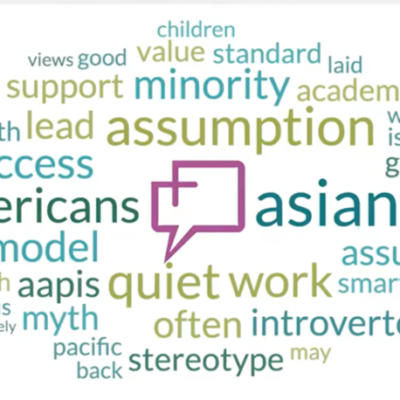By Dr. Trudy Arriaga, Dr. Stacie Stanley and Dr. Delores Lindsey
“It’s a Man’s World” is more than a title to a 1966 James Brown hit song. The ballad tells the story of the historical dominance of men that continues in today’s modern world. This title describes the gender gap that persists today among male and female leaders. Education, nursing and secretarial work have historically been considered female occupations. Leadership fields predominantly reserved for males include finance, science and technology, state and federal political executives, Fortune 500 CEOs, and media owners and executives.
So, maybe it has been a man’s world of unearned privileges and prestigious positions that continue to widen the gender gap. Of course, when we say men, we do not mean all fields are comprised of predominantly men. However, perceptions often prevail because of the bombardment of media influencers. How do we overcome these barriers of systemic sexism and racism? How do we narrow the gender gap? Male and female education leaders who continue to democratize our profession and make leadership roles accessible to women and men are asking these critical questions.
The purpose of this article is to rewrite the ballad to describe paths for leadership opportunities in education. We invite female and male colleagues to join us on this journey. We question the default male leader and overcome systemic barriers of resistance to change. We call out the unawareness of need to adapt to our complex educational environments that overcome inherited patterns of leadership inequities. Our revised narrative identifies support factors that propel some women to top leadership roles. Although an incremental increase of female leaders at the middle management level may happen over the next 5-10 years, we describe a need for systemic, patterns of growth in large numbers at the superintendent level across the country. Changing the narrative from not enough to we are more than enough, requires male and female executive leaders tell new stories of overcoming barriers through networks for mentoring and sponsoring.
We propose more female leaders and their male allies interrupt narratives that historically limited access to opportunities and successes. Candidates’ professional preparation and experiences that describe these barriers and support factors will expand leadership opportunities for female leaders. This article is written for educational leaders who want to join us in … intentionally remaking a system that long ago put men in charge of women, not by happenstance, but by design (Chiefs for Change, April 9, 2019, p. 3).
New stories lead the way for overcoming barriers for future generations of female leaders. These new stories include our male colleagues who may not have seen their roles in narrowing the gap. Specifically, we offer this message to our male colleagues: As you read and hear the experiences of women, especially women of color and LGBTQ+ community members, you will grow as culturally competent leaders. This is your opportunity to use your platforms to ensure opportunities for others. Your role is that of an ally, advocate, and mentor. Specifically, you can lead with mentoring strategies, best practices, and intentional actions.
Barrier or support factor
The question we have for female and male educational leaders is: Are you a Barrier or a Support Factor for women on their educational leadership career journeys? Our best reporting shows women average 77 percent of the teaching workforce, 52 percent of the principal workforce, and only about 26% of the superintendent workforce (AASA, 2022). We can safely say, women are doing the work of classroom teaching while disproportionately, men are making administrative and leadership decisions.
Following the #MeToo movement, studies within corporate organizations determined how men and women felt about being with other men and women in a mentoring situation. The results reported that 60 percent of male managers surveyed felt uncomfortable working alone with women, including mentorship, one-on-one meetings, and socializing. This is a 14 percent increase from US data over previous year. This 2019 report indicated that nearly half of all male managers surveyed said they would feel uncomfortable socializing with women outside of work, a 12 percent increase over 2018. Importantly, out of 2,421 male respondents, a combined 86 percent of men have avoided 1 or more of the following:
- mentoring women,
- being mentored by women,
- going to evening work-related events with a woman from work,
- working alone with a woman, and
- socializing with a woman from work alone or traveling with a woman from work.
Obviously, these reactions by male mentors can have catastrophic impact on a woman’s career. Although the studies were applied to the broader sector of corporate employment, we believe that since women executive school leaders are still an emerging reality in our school districts, lessons from these sources can be applied to educational leaders.
So, what about careers of women in educational leadership? When do typical mentoring conversations occur? Mentees or mentors often request one-with-one, closed door conversations. Conversations are away from campus at conferences or lunch/dinner conversations. Is the problem the time, place, and appearance for the conversations, or the behaviors of the mentors and mentees during the conversations? Let’s assume the problem is when men, by virtue of their privilege and entitlement in a society where sexism too often prevails, experience discomfort with vulnerability; therefore, they become reticent to engage in a confidential, closed door conversation with women. The consequences of their unwillingness to change their behaviors result in loss of opportunities for women. So, once again, women are being denied prospects and people for mentoring that may lead to possible promotions.
Women, especially women of color and members of the LGBTQ+ community, in high level educational leadership positions are often viewed as exceptions rather than the rule. Too often female principals and superintendents are viewed as exceptional and extraordinary; whereas, their male counterparts, especially white males, are seen as leaders being in the right place at the right time. Male principals and superintendents are expected to be promoted because they’ve proved themselves to fit the mold of success. Their male mentors prepared them well to serve in the same system from which the mentor came. The pipelines for promotion are smooth. The expectations are clear, the rules are the same, and the work environment is familiar and comfortable. So, how important and different are mentors for women and male leaders?
Jennifer W. Martineau and Portia R. Mount (2019), co-authors of “Kick Some Glass: 10 Ways Women Succeed at Work on Their Own Terms,” write that HR directors could proactively recruit a pool of candidates that is at least 50 percent women before starting the selection process. They stated that organizations should look at the glass ceiling as a systematic issue and not as an interpersonal or individual problem. Leaders need to implement structured systems and practices to break glass ceilings and make space for women. Until the glass ceiling is shattered, Martineau and Mount (2019) contend that women take charge of their own growth and success. The co-authors interviewed a broad array of successful male and female leaders. From their extensive research, the following themes/actions/recommendations emerged for females:
- understand your context,
- uncover what you really want,
- discover your definition of success,
- identify your strengths and weaknesses, and
- set goals for yourself to overcome the glass ceiling barriers.
Very importantly, Martineau and Mount (2019) stated clearly that their recommended actions are not given to fix women rather help motivate women leaders to overcome barriers and grow their careers. Although we as co-authors feel the corporate model and accompanying data are important to know and study, we want to caution our readers about once again the absence of data regarding LGBTQ+ and career advancement. We also realize that much of the data from the studies we reviewed are self-reported data and sexual orientation or identity are categories not included in questionnaires nor interviews.
Your turn: We invite your reflections
What might be some lessons educational leaders can learn from these corporate studies? In what ways do these recommended actions support your career planning for overcoming personal and institutional barriers? What’s missing from these studies that’s important for educational leaders to know?
Pathways for gender equity: The importance of men supporting women
Educational mentors often are members of professional education organizations and volunteer to mentor emerging leaders. Typically, mentors are retired superintendents, other district office administrators, principals, or educational leadership university professors. Since most of these positions have traditionally been held by white males, most leadership mentors are white men. As coauthors, we conducted interviews with women leaders and asked about their mentors, either assigned to them or volunteered to mentor them: What were your experiences with your mentors? Were they support factors or barriers along your career path? Following are stories we’ve collected about female leaders and their mentor experiences:
Most of my mentors have been males … and I had a male mentor who I deeply respected. At that time, I was a high school assistant principal looking to be a high school principal and he told me … ‘don’t apply for that. Women are not high school principals. Apply for middle school principals.’
— African American, female, currently serving as Assistant Superintendent
I’ve had many mentors in my life…all my mentors have been men. And when I think of the barriers in my life as becoming a woman leader, with all due respect, many of the barriers I experienced were other women. Women not welcoming me into the room, women not applauding me for my efforts. I was always kind of trying to fit in, get in, be invited in. As we come together as women, you know just that opportunity to recognize that how in the world are we going to move forward when we don’t support each other?
— White, Female, Superintendent
One thing men do really, really well is networking. Men have friends that they’ve had for 25 years; they network; they know each other; they bring each other to each other’s districts. And so, I noticed, male candidates going from dean to assistant superintendent, (I’m in the final interviews because there’s nothing more important to me than our leadership team). And it kept being– The first few that we did were their friends. And I keep saying, how is this– no women? Why are no women making it in? And so, then I said, well, let me screen those, so I sat through the next interviews, right? I had to say that it’s not a board policy, so I had to say any leadership positions for our interviewees, I want 50-50 women and I want 50-50 diverse. That’s it. Don’t bring me any people to interview, any candidates unless it’s 50-50. And that changed the way we did business.
— Latina Superintendent
I came out at the age of 28! I would no longer hide from my family. I remember that day like it was yesterday. My heart raced; then, the fog lifted and I could finally see clearly and they could finally see me for who I am. I felt somewhat better, but I still feared coming out in the workplace. I continued to hide, never sharing milestones like my commitment ceremony with my spouse, promotions, and other life events. Finally, two decades later, the time came I knew I was ready to be a superintendent. No way was I going to enter that role without my whole personhood. I knew I needed to “come out” to the Board so they never wondered ‘what else is she hiding?’ Today I can bring the absolute best of me to work in service to ALL students every day. I have found great empowerment living my truth. Although I am exhausted with “coming out, I proudly stand as advocate and mentor to others in my state Organization for LGBT students and staff who sometimes feel they only existing in the past. I realize when executive leaders have a strong sense of their identity, beliefs, and values, they not only free themselves they are able to free others through their advocacy. I’ll continue to move forward in my career path as mentor. What’s next? Is it time for me to be an Activist?
— Gay Superintendent
We believe that the scarcity of such critical opportunities for women leaders has historically sustained gender inequities in the education profession. We need our male colleagues to join us on this journey toward gender equity.
The current narrative
Today’s narrative for female executive educational leaders differs little from the mid-1980’s-1990’s when women superintendents numbered fewer than 3 in 10, and fewer than 1 in 10 were women of color. The story for the past 40 years tells of the overrepresentation of white women as teachers and the underrepresentation of women and women of color in top education leadership positions. So, who has been leading our schools and districts? Irrespective of the diverse nature of our PK-12 schools, site and district-level educational leaders have been and still are, white men. The career paths for White males are typically by way of middle and high school coaching positions, to the principalship, to a district office position, then to the top position of superintendent in the same district. At the same time his female counterpart, however, starts as an elementary teacher, then becomes a grade level coordinator, then moves to assistant principal at a middle grades school, then becomes a coordinator or director at the district office, then assistant superintendent, and finally becomes superintendent in a different district. The pipeline for women of color is narrower and takes longer. (CfC, 2019). This has been a story of unfairness, lack of representation and support, and few opportunities for female leaders to move through a system designed for women to teach and men to lead. The true crisis today is the system is still in place and loss of talent at the top is squandered.
Change the system using gap closing strategies: Males as mentors
Our intention is to encourage women educators who have confronted barriers and are continuing to confront and overcome barriers today to tell their stories. We want their stories to fill the talent and gender gap created by system-wide inequities. We focus on female leaders’ education leadership career journeys and the men and women who support them.
When we say support, we are speaking specifically of men educational leaders intentionally and actively:
- mentoring women leaders’ continuous growth;
- advocating for women having seats at decision-making tables, on boards, and with their male counterparts;
- allying with and mentoring other men to see the need for having women’s perspectives, experiences, and contributions in decision-making roles; and
- conducting a gender equity inquiry and action plan.
The gender and compensation gaps still exist in U.S. public schools. We continue to ask female leaders about their journeys including the barriers they encounter, the support factors available to them, and pathways they may have chosen. We encourage you to write your story and share publicly so others may benefit.
Just to be clear, we are advocating for young women to seek male mentors willing to:
- embrace the qualities that are often marginalized as feminine;
- look around the room and see who is there and who is not there and advocate for more women leaders because of the perspectives and experiences they bring;
- sit back and listen for voices different from their own; and
- question themselves about who they are in relation to their female colleagues (Menkedick, 2019).
Changing the narrative: Tell new stories
We suggest when successful women leaders share their stories of overcoming barriers, through collaborative practices and conversations, the job itself will change. Female leaders mentoring aspiring female leaders will help change perceptions of women as “less than men” and more as successful peers. Disparities and differences in how women are treated in a male-dominated work environment may influence how women continue to be treated, no matter who she is. Men mentoring women up the system is an important gap-closing strategy. Men mentoring other men about the strengths women leaders bring to the organization is even more powerful.
Stories bring to light lived experiences. Consider the story of a husband-wife team of superintendents. They were interviewed at different times during a local networking event. On their drive home, the female superintendent said, I’m always asked that annoying question, “How do you balance work and family?” Her husband replied, “Hmmm, no one has ever asked me that question.”
Conversations and stories help shift the conversation from being stuck in negative stereotypes for women and men educational leaders and ways to examine gender inequity in educational leadership. Personal reflective journeys allow an educational leader to closely examine her values, beliefs, and assumptions about who teaches, who leads, and who learns. This personal exploration reveals biases and prejudices typically grounded in personal, cultural, and professional experiences. We all have conscious and unconscious biases, reflective practice, dialogue, and interaction with people who are different from ourselves, will help surface our views of our students, their families, and the communities we serve. This personal exploration of values, beliefs, and assumptions and the intentional review of policies and practices is referred to as the inside-out process of equitable educational practice. Reflective practice, telling the counter narrative, and engaging in conversations about overcoming barriers through mentoring support factors are inclusive, gap closing actions.
In the closing lines of James Brown’s ballad,
This is a man’s, man’s, man’s world
But it wouldn’t be nothing
Nothing without a woman or a girl.
Now it’s time to write a new song,
It’s our world.
It’s our world
It wouldn’t be nothing without us all!
References
Chiefs for Change. (2019). Report: Breaking through—Shattering the glass ceiling for women leaders. Washington, DC.
Menkedick, Sarah. (2019, June 9). Unsaid and unheard: The everyday importance of saying “no” to men. Los Angeles Times, A21.
Martineau, Jennifer W., & Mount, Portia R. (2019). Kick some glass: Ten ways women succeed at work on their own terms. New York, NY: McGraw-Hill Education.
Sud, Shruti, & Amanesh, Apurv. (2019, January 4). Breaking glass ceiling in leader- ship roles. Retrieved from https://www.shrm.org/shrm-india/pages/breaking-glass-ceiling-in-leadership-roles.aspx
The preceding article was written by the authors of “Leading while female: A culturally proficient response for gender equity” (2020) and “My leading while female journey: A guided reflective journal” (2023).
Dr. Trudy Arriaga serves faculty member in the Graduate School of Education at Cal Lutheran University in Thousand Oaks, CA. She is a Corwin co-author of best-sellers Leading While Female: A Culturally proficient response for gender equity, My leading while female journey: A guided reflective journal, and Opening Doors: An Implementation Template for Cultural Proficiency.
Dr. Stacie Stanley serves as the Superintendent in Edina Public Schools. Stacie is a Senior Training Associate at the Center for Culturally Proficient Educational Practice and a co-author of Corwin’s best-sellers Leading While Female: A Culturally Proficient Response for Gender Equity and My leading while female journey: A guided reflective journal.
Dr. Delores Lindsey serves as educational equity consultant, cofounder of Center for Culturally Proficient Educational Practice. She is Corwin’s co-author of Leading While Female: A Culturally Proficient Response for Gender Equity and My leading while female journey: A guided reflective journal.









Leave a Comment